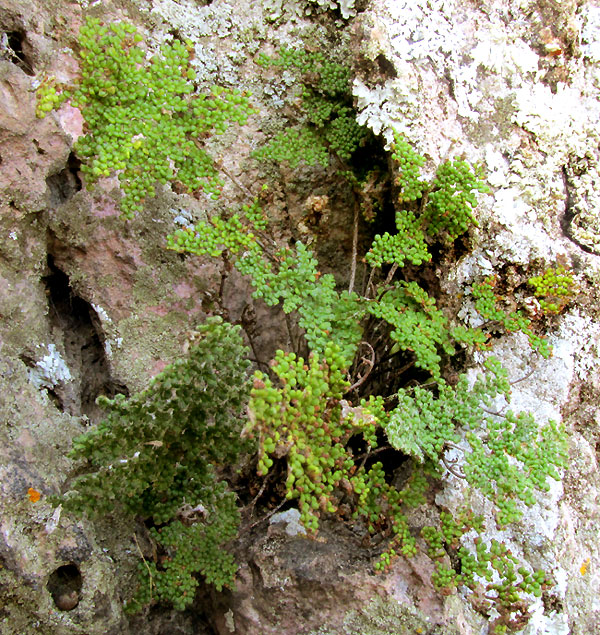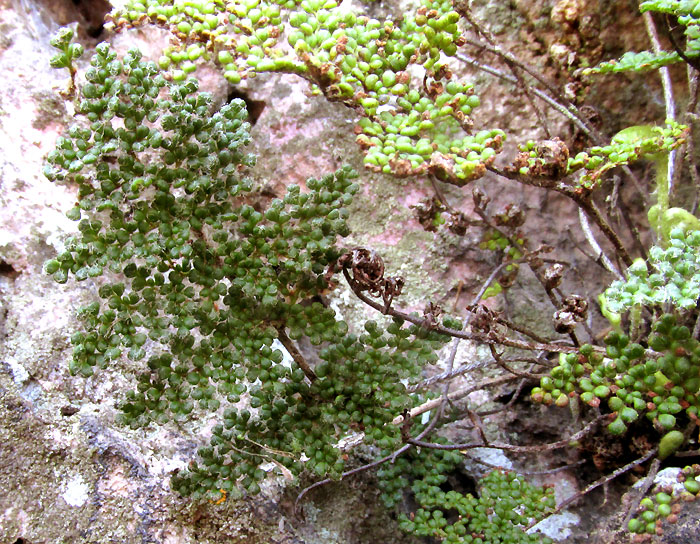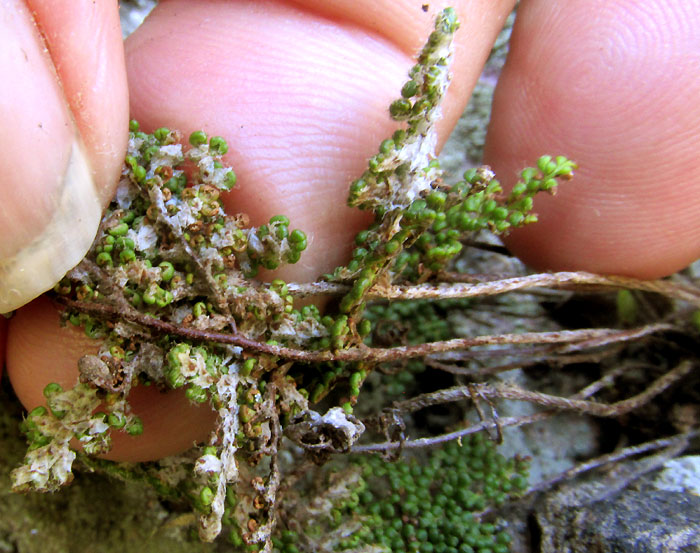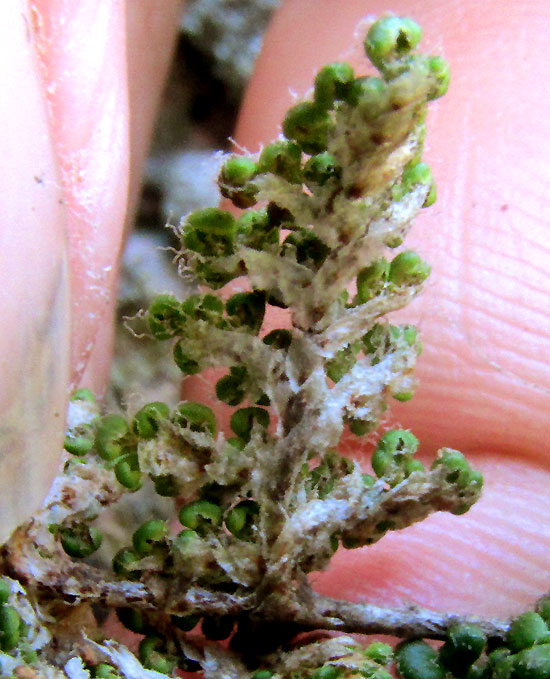Excerpts from Jim Conrad's
Naturalist Newsletter
entry dated August 23, 2022, issued from near Tequisquiapan, elevation about 1,900m (6200 ft), N20.565°, W99.890°, Querétaro state, MÉXICO
HEMIONITIS MYRIOPHYLLA

In a shallow valley with its southwest side formed by northeast-facing vertical cliff of eroded, highly tilted, ancient beds of magma, the above fern sheltered in a deep fissure. It was a little fern, the above picture covering an area only about 11cm across (4½ inches). Probably the fern never saw direct sunlight. Even from this distance it's clear what's unusual about the fronds: Their ultimate subdivisions are formed into tiny, spherical pinnae.

The above picture, a little closer, shows dead, dried-up fronds even smaller than the green ones. In this region the last dry season was especially rainless, and the rainy season arrived two months late, so maybe the drought killed those fronds. Even the green fronds show brown spots. This rock surface is a rough environment where even the lichens are spotty.

We've seen a fern like this before, the somewhat larger Mexican Beaded Lip Fern, Hemionitis mexicana, but a look at this fern's frond undersurfaces quickly dispelled any notion that this might be that species. Such large, silvery scales on such small fronds were very unlike what's on the Mexican Beaded Lip Fern, and a big surprise.

Up close, not only were the scales huge but also the spherical nature of the pinnae was even more apparent. Pinnae sides curved over to create false indusia beneath which spore-producing sporangia are produced. Lip ferns are known for their curved-under pinnae margins providing shelter for spore-producing sporangia, but here one curved-under margin gives way to the opposite curved-under margin, with no flat pinna surface in between!
With such tiny, spherical pinnae with their surfaces largely covered by such scales, this fern makes itself known as HEMIONITIS MYRIOPHYLLA, described in the Flora del Bajío as distributed throughout most of Mexico's uplands at 1800-2800m (5900-9200ft), through parts of Central America, and South America into Argentina. In some places it's abundant or at least common, but scarce in others. The Flora describes its fronds as reaching 45cm in length (1½ft), further suggesting that our fern inhabits a particularly hostile environment in which it's grown up stunted.
No commonly accepted English name is given to Hemionitis myriophylla, and even the Spanish one, helecho de cerro just means "mountain fern," and there are many mountain ferns. The binomial also is shaky. The Flora del Bajío and other literature a few years old place our fern in the genus Cheilanthes. On Wikipedia at this time it's assigned to the genus Myriopteris, but the more-or-less final authority on current plant names, Kew Garden's "Plants of the World Online," assures us that it's a Hemionitis, at least as of mid 2022. Thankfully everyone seems to agree that the species name is myriophylla, so at least some kind of handle is available for looking up the plant in case the above names fail us.
In searching for our plant's medicinal uses, it's astonishing how many web pages have copied from one another the exact unilluminating words "It is used to treat unspecified medicinal disorders and as a medicine."